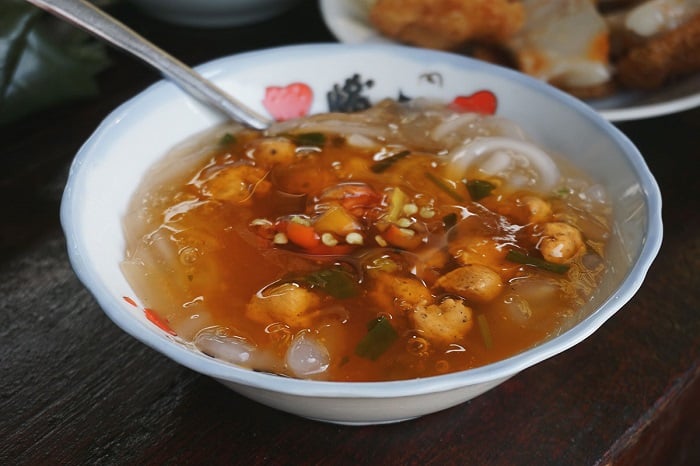This is a long-standing specialty in Hue, originating from Nam Pho village (Phu Vang district). Nam Pho Banh Canh consists of rice flour and filtered flour, processed according to the ratio to create a soft and chewy texture when eaten, the red and pink color of shrimp, the green dot of scallions mixed with a thick soup. With spring rolls and a few other fillings, it creates a full, quality bowl.

Source: Collected internet.
Vietnam has an area of 331,212 km², a land border of 4,639 km, a coastline of 3,260 km, and shares a maritime border with Thailand through the Gulf of Thailand and with China, the Philippines, Indonesia, Brunei, Malaysia through the East Sea. Vietnam claims sovereignty over two disputed geographical entities in the East Sea, the Hoang Sa archipelagos (which has lost control in reality) and Truong Sa
Vietnam's terrain has about 40% mountains and forests, 40% hills and coverage of about 75% of the country's area. There are mountain ranges and plateaus such as Hoang Lien Son range, Son La plateau in the north, Bach Ma range and plateaus following the Truong Son range in the south. Network of rivers and lakes in the delta or mountainous areas of the North and Central Highlands. The delta accounts for about 1/4 of the area, including deltas such as the Red River Delta, Mekong River Delta and the Central Coastal Plains, which are densely populated areas. Cultivated land accounts for 17% of Vietnam's total land area.
Religion in Vietnam is quite diverse, including Buddhism (both Mahayana, Theravada and some modified groups such as Hoa Hao, Tu An Hieu Nghia); Christianity (including Catholicism and Protestantism); endogenous religions such as Cao Dai; and some other religions (Hinduism and Islam). Different types of folk beliefs also have a lot of influence. The majority of Vietnamese people consider themselves non-religious, even though they still go to religious sites several times a year...
Nha Rong Wharf and Ho Chi Minh Museum, Ho Chi Minh City Branch, at 1 Nguyen Tat Thanh Street, District 4, Ho Chi Minh City. This place not only displays artifacts associated with his life and career, but also especially marks the event that on June 5, 1911, President Ho Chi Minh left Vietnam from Nha Rong Harbor to begin his journey. traveling around the world to find a way to save the country and liberate the nation from the yoke of French colonialism...